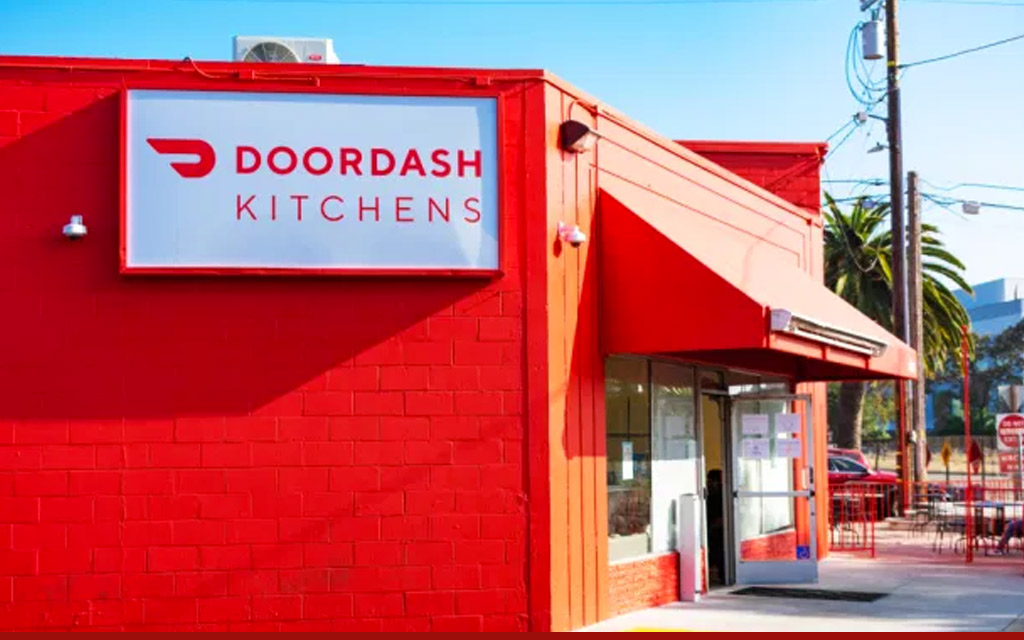I heard a great story the other day from a Brooklyn friend who braved going to a Grimaldi’s over the weekend. Grimaldi’s is a New York nirvana for pizza lovers. She reports that her family waited over an hour for their pizza, because the restaurant’s take-out business was too inundated to take care of its real-life guests. Grimaldi’s, it would appear, is the perfect candidate for a ghost kitchen makeover.
Ghost kitchens, cloud kitchens, and virtual restaurants…eerily, but aptly named, these are a new sort of restaurant–places where food gets cooked, but not served. They are kitchens for take-out and delivery only, with no hint of waiters, tables or dine-in space. Such restaurants are being touted as the savior of the hard-hit restaurant industry, offering a new, more efficient model for separating the world of ordering in from the world of eat-in dining.
The Ghost in the Machine
Some say the “ghost” is the lack of parking lots, tables or waiters. Others think of it more in terms of a new business model, in which the ghost means letting someone else take care of headaches like real estate, leases, and industrial kitchens, freeing chefs to focus on what they do best.
Don Pintabona, who has served as executive chef at Tribeca Bar & Grill, and is a restaurant veteran, told me “Even before the pandemic, food delivery apps began to reshape the industry. Some forms of ‘ghost’ kitchens were already starting to appear. The trajectory was amplified as a result of lockdowns and shutdowns. And aside from the obvious financial benefits of not having to deal with full-time brick & mortar, there are other benefits, such as being able to piggyback onto existing concepts, where friends can help friends. It also allows restauranteurs to concentrate on the nuts and bolts of cooking–presenting, and delivery of the food, without many of the other headaches involved with running an independent restaurant. Those responsibilities are taken on by the ‘ghost’ operator.”
Variations on the Theme
Variations on the ghost kitchen theme are rising faster than an on-demand baguette. One of the most visible is a well-funded Los Angeles company founded by Travis Kalanick, Uber’s now-notorious founder, called Cloud Kitchens. Think of it as the culinary equivalent of WeWork. You rent a pre-built kitchen and all of a sudden you’re in the food business. Kitchen United, another growing franchise, now in four cities, lets a customer create their take-out order from a collective of local choices … a sort of a food court for the takeout world. The company closed a $40 million series B round of funding last fall. Zuul offers its users kitchen infrastructure, consulting services, delivery fulfillment and more in the hopes of creating virtual brands that are exclusively in the ghost kitchen domain. Even DoorDash and UberEats have gone beyond delivery and are now investing in ghost kitchens—becoming in effect ghost restaurant chains. UberEats in particular is aggressively relying on data about what eaters in different areas like and then delivers on that demand. It now has 600 online-only virtual restaurants in 300 cities. Celebrity chefs are experimenting to grow new brands. Chef Eric Greenspan in NY has AltGrubFaction, a sort of custom online food court. Daniel Boulud, the high-end chef and restaurateur, now runs an online business called Daniel Boulud Kitchen. (The New York Times wrote about it here.) And well known fast food brands like Chipotle that still do brisk dine-in and take-out business are also investing in ghost kitchens in order to streamline operations. Michael Wolf, Founder of The Spoon and The Kitchen Summit, sees a gold rush of brands testing out their powers in Ghost Kitchens. “If you’ve got a following it’s simply another brand extension,“ says Wolf, pointing to DJ. Steve Aoki’s branded Pizzaoki, which delivers gourmet thin-crust pizza, as an example.
For the moment, ghost kitchens are a bright spot in a bleak restaurant industry that’s been decimated during the pandemic. According to Technomic, a company that tracks food industry innovation (ed.’s note-great name!), sales via ghost restaurants in the United States will rise by a projected 25% each year for the next 5 years—an estimated $300 million in yearly sales. At the same time, Technomic also projects that 20-25% of independently owned and operated restaurants will never re-open after the pandemic.
While the terminology of ghost, virtual and cloud kitchens is still fermenting, Michael Schatzberg, a restaurant consultant specializing in on-demand digital delivery, says one thing is for sure: “The tech world and the food world are growing closer.” One of Shatzberg’s concerns is that ultimately the data-driven nature of tech companies will go beyond responding to customer preferences and habits. “Instead,” he says, “they’re using data to create customer habits.” In general, he concludes that all restaurant managements will need to become more tech savvy and omnichannel to survive.
“Restaurants need a fully diversified revenue stream” says Michael Wolf. They can’t live on delivery or on dining-in revenue alone. “Ghost kitchens,” he says “become sort of like SEO .” The goal is to get noticed and climb above the noise in a crowded field. Issues of trust, brand familiarity and advertising will be very important, he says.
These kitchens without guests are an urban and suburban phenomena, where population density warrants the efficiencies of take-out and delivery to scale. For the consumer it comes with a cost. That $7 burger quickly goes to $14 with delivery and service fees. And you’re seeing a growing number of scofflaws bypassing local regulations and using home kitchens to serve and sell food during the pandemic.
At the end of the day, the customers’ pandemic-era demand for touchless delivery is coupling with chefs’ desire to get out from under burdens like real estate and labor costs are setting the stage for the inevitable continuation of ghost kitchens’ rise.
SOURCE: https://techonomy.com/2020/12/ghost-kitchens-rise-meet-go-demand/




